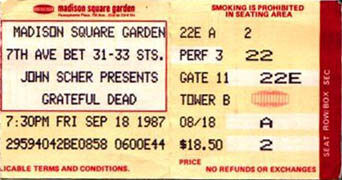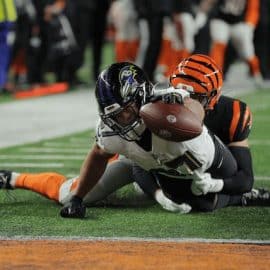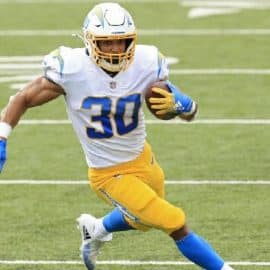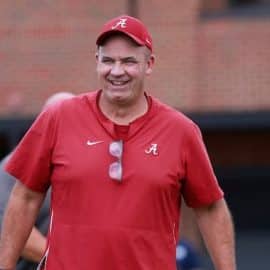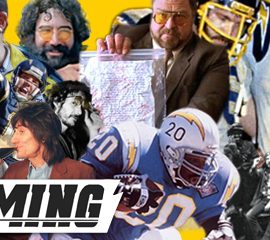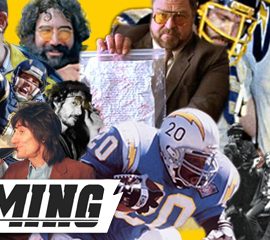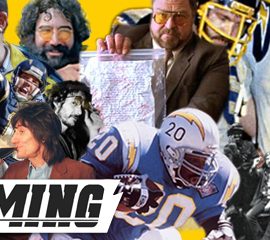I could hardly contain my anticipation at school as I tried to make it through my daily sophomore schedule that Friday. It was September 18, 1987. I never before realized how many kids had skeletons, dancing bears, or drawings of Jerry Garcia on their binders or backpacks before that day. Needless to say, the smoking section was a lot less populated than usual.
I don’t think any of the Deadheads at Horace Greeley High School suspected that I would be joining them that night, let alone end up attending more Dead shows than most of them did. But once I got into something, I guess I didn’t know how to do it halfway. With my short brown hair and khaki pants, I looked more like a T.G.I. Friday’s employee than a guy about to see his first Grateful Dead concert. I considered the rule about not wearing the shirt of the band you were going to see, but wasn’t making a conscious effort to not be a poser worse than actually being one? It didn’t matter since I didn’t own a tour shirt anyway. My magenta tie-dye commemorating Ben and Jerry’s brand new “Cherry Garcia” flavor would have to do.
After spending the day squirming in my desk, I was more than ready to get the fuck out of Dodge. As soon as school let out, I drove my parents’ silver Volvo GL to the Chappaqua train station. Fortunately, there was a deli across from the platform that didn’t proof you for beer, so I got a six-pack of Bud for Rose and me to split. Stoney had the tickets and would meet us at the Garden. Before boarding the train, I thought twice about popping one of the beers open. After getting a look inside the car, however, I knew there was nothing to worry about.
I would soon recognize this as the “scene” that accompanied all Grateful Dead concerts. It would usually spread out over numerous parking lots, however, rather than a single train car. There were people smoking joints, passing around liquor bottles, and blasting tapes. I was even able to identify a few bootlegs from my growing collection. I took a long gulp of my beer and waited for the train to hit Scarsdale. When it finally did, however, Rose wasn’t standing in the doorway. That was okay. He must just have gotten on through another car. I wondered if they were all as wild as this one, but as soon as I saw him walking down the aisle with his mouth agape I knew the answer.
“Wow,” he said. “It’s a circus already.”
I handed him a beer in agreement. We each polished off two more in the thirty minutes it took to get to Grand Central. As the car emptied out, we decided to walk to the Garden to temper our buzz a bit. As we reached the top of the staircase, a kid with dirty blond hair and a hooded poncho sidled up next to me. I must have given off the scent of the uninitiated since he immediately asked me if this was my first show.
“Yeah, it is.”
“You’re so lucky, dude. Get ready for a greeeeaaaat time.”
I was lucky? I mistakenly assumed any seasoned veteran would look down on me. But maybe this wouldn’t be like every other high school clique. It was almost as if this kid knew I was thinking because as he turned away he reassured me on my choice of attire.
“Cool shirt, dude. I haven’t seen that one on tour.”
The scene outside the Garden was similar to what I saw on the train, except it had now spread onto the streets of Manhattan. The police were scattered throughout, but seemed to be observing rather than trying to control the action. It was at this point that I realized that there also hadn’t been a conductor to take our ticket on the train. Clearly, the hands-off approach was in effect everywhere tonight.
That appeared to be the only way to handle the circus on 7th Avenue. There were people selling handmade T-shirts, asking for extra tickets, and handing out flyers with the setlists from recent shows. I even saw someone selling a stack of grilled cheese sandwiches. I had no idea where or when they cooked them and didn’t want to find out. In the middle of all this stood Stoney with a huge smile underneath his mop of light brown hair.
“How awesome is this?”
We didn’t even need to answer as he handed us our tickets. We were in the upper deck, but didn’t even care. We were so fired up that none of us partook as joints were passed to us as we climbed the stairs to our seats. When we got there, I looked at my watch. It was 8:00 PM, thirty minutes after the scheduled start, but everyone told us beforehand that they never began on time. I assumed it was just another way the band defied convention, which held obvious appeal for me.
As we waited for the lights to go down, I looked at the gear already on the stage. There was a giant rug that looked like it belonged in my grandparents’ condo in Florida. Speakers were stacked on both sides of the stage, but there were no other identifiers as to what band was playing. At about 8:30, the Garden finally went dark and a huge roar erupted. The band walked onstage and took what I would come to learn were their usual spots. Under us on stage left was Phil Lesh, who looked like a high school shop teacher. His glasses seemed to support his Lego-like helmet of brown hair and his rainbow colored tie-dye was the only evidence that he was in a band. The guy next to us assured us that even this high up, “Phil side always has the best sound.” Bob Weir, the youngest band member and the closest thing the Dead had to a rock star, occupied the middle microphone. He was wearing black Converse hi-tops, a black T-shirt ripped around the collar, and cut-off jean shorts. This was an odd look even in 1987. Jerry Garcia occupied the last slot and wore his usual black T-shirt and corduroy pants.
I knew from the small collection of tapes I had amassed since the summer that the band didn’t say very much to the audience. Many times they didn’t speak at all, as if to let the music do the talking. The reactions they shared with each other were further evidence that they were really working on the fly. Those looks also suggested there were many times that they couldn’t get it going. Luckily for us, this wasn’t one of those nights.
They didn’t introduce a single song, but the crowd recognized each one within a few notes. When they played, they looked like they were all soloing at once. Jerry’s guitar was undoubtedly the catalyst, but he never acted like a rock star playing the Garden. When one of his runs caused the crowd to explode, his only response was to push his glasses back up the bridge of his nose. This still seemed like another outlaw move to me. After all, this was a band that once tried to get Warner Brothers to let them call one of their albums Skull Fuck. (It was the one with the skeleton and roses on the cover.)
When the lights came on to signal the end of the first set, the first thing we saw was the guy at the end of our row snorting a line of coke off the armrest of his chair. Before we could even react, he sprung up to give us his assessment thus far:
“Hot set, but short. They’re really gonna tear shit up from here on in.”
He was right. When they reemerged from backstage, you could already tell that the second set was going to be where the goods were. We all sat in the smoky darkness in anticipation as they tuned up. Jerry’s fingers ran up and down his fretboard and instantly the crowd recognized “Shakedown Street.” As a roar came up from the audience, both drummers erupted with a sound like a series of firecrackers.
WOOWWWWWWWWWWWWHHHHHHH
With that, Jerry’s guitar started the set in earnest. Stoney, Rose, and I stood slackjawed as a massive spotlight panned across the crowd. This thing literally looked like the size of the Bat Signal and yet I didn’t notice it until that moment. The song sounded like “Disco Dead” when it was recorded back in 1978, but on stage, they had boiled it down to its essence. It was a funky, yet sinister bad ass.
But it was the version of “Morning Dew” they played about an hour later that really made the night epic. Jerry may have looked like Santa Claus by 1987, but he sang this ballad with all the emotion of a screaming child. You could tell by the looks of the other band members and the shrieking crowd that he didn’t get this raw very often. His solo was even better, as he poured even more emotion into the notes than the words. There were times that it even sounded like the guitar cracked like a creaky voice from being played so fast. This isn’t just hyperbole. This version of “Dew” is universally considered to be one of the best ever. In fact, the show was later released in the career-spanning box set that featured one concert from each of the band’s 30 years.
By the time it was all over, we all knew we’d be back. I looked at Rose and Stoney and knew none of us were thinking about our respective train rides home. We went to more shows together, but they eventually stopped. I, of course, couldn’t exercise such moderation.
But I’m glad I didn’t. I saw other shows that were so good that they became live albums and others that were average or downright disastrous. But that just made the special ones better because I saw what it took to get there. I went to as many concerts as I could to maximize the chances of seeing “the one.” When the band was in front of me, I knew that for one night I wouldn’t have to wonder what or how they played.
But it was more than just the music. Dead shows gave me a sanctuary when it seemed like the real world was closing in too fast. I didn’t need to worry about responsibility on tour. I could just be. Years later, the shows themselves became the responsibility. By that time, I was no longer taking vacations, but hiding from reality. But with 137 shows to go, I boarded the train home only thinking about the next one and how I was going to track down a tape of what I’d just experienced.
Add The Sports Daily to your Google News Feed!

